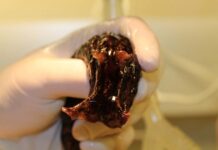A metal detectorist’s discovery in Saxony, Germany, has yielded a remarkable find: a 2,200-year-old gold coin, identified as a “rainbow cup.” This coin is significant not only for its age but also because it represents a rare instance of imported Celtic currency in a region considered outside the typical Celtic settlement area.
What is a “Rainbow Cup” Coin?
These unique coins, known as “regenbogenschüsselchen” in German, translating to “tiny rainbow finger bowl,” are named for their curved shape and the ancient Celtic superstition that treasure could be found where a rainbow touched the ground. Created by the Celts – warrior tribes who inhabited mainland Europe and famously sacked Rome – rainbow cups offer a tangible link to their culture and economy. The newly found coin, dubbed the Gundorf Rainbow Cup after its discovery near Leipzig, is only the third Celtic coin ever found in Saxony.
The Details of the Gundorf Rainbow Cup
The Gundorf Rainbow Cup, weighing just 2 grams (about the weight of a U.S. dime), is in remarkably good condition, described as “almost mint.” Its design features a stylized head of a stag (or similar animal) on one side, and on the other, an open neck ring with thickened ends—possibly a depiction of a Celtic torc, a type of necklace – alongside a star with rounded corners and a sphere.
Uncovering a Picture of Ancient Trade
The exceptional preservation and rarity of this find suggest it was likely a status symbol or a store of value, rather than currency actively used in daily transactions. Its discovery, combined with recent finds elsewhere in Germany, is painting a clearer picture of the extensive trade relations between the Celts and Germanic-speaking peoples before the Roman invasion.
Recent Discoveries and Their Significance
Several rainbow cups have emerged in Germany over the past few years, strengthening this emerging trend:
- 2021: Archaeologists uncovered a stash of 41 plain rainbow cups in Brandenburg, indicating trade connections despite the Celts not inhabiting the region.
- 2023: A single, decorated rainbow cup was found in Bavaria, possibly lost by a traveler along an ancient road.
Implications for Understanding Celtic-Germanic Relations
The Gundorf Rainbow Cup, despite being a single coin, provides further evidence of regular contact and connections between the Celts and the inhabitants of Saxony over two millennia ago. These discoveries challenge previous assumptions about the geographic extent of Celtic influence and highlight the importance of trade in fostering cultural exchange across Europe in antiquity.


























